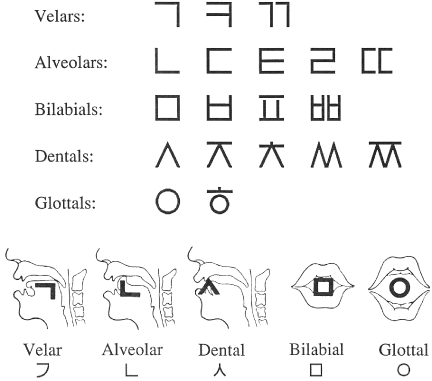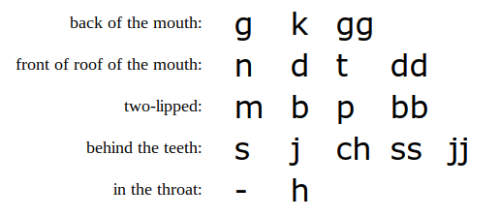Idempotence.

Idempotence.
A term I’d always found intriguing, mostly because it’s such an unusual word. It’s a concept from mathematics and computer science but can be applied more generally—not that it often is. Basically, it’s an operation that, no matter how many times you do it, you’ll still get the same result, at least without doing other operations in between. A classic example would be view_your_bank_balance being idempotent, and withdraw_1000 not being idempotent.
HTs: @aidmcg and Ewan Silver who kept saying it
More Posts from Philosophical-amoeba and Others
A newspaper you can blow your nose on

Here are some pages from Berthold’s Political Handkerchief, a political newspaper printed on cotton to avoid the government’s tax on paper.
Henry Berthold was later arrested, charged with shoplifting a boa and dismissed to Australia.












My boyfriend, @inlove-with-a-spine, is very uninformed about Southeast Asian fruits (he only knows durian) which inspired me to find these online.
I’m pretty sure the names are different in other Southeast Asian countries, though.
From left to right (in Indonesian):
Duku
Jambu monyet
Jeruk
Lengkeng
Kedondong
Manggis
Rambutan
Nangka
Salak
Sawo


A basic schematic of why the Korean alphabet is so cool, from Wright House:
Unlike almost every other alphabet in the world, the Korean alphabet did not evolve. It was invented in 1443 (promulgated in 1446) by a team of linguists and intellectuals commissioned by King Sejong the Great.
In the diagram [above], the Korean consonants are arranged into five main linguistic groups (one per row), depending on where in the mouth contact is made. Notice that there is a graphic element common to all the consonants in a particular row. The first consonant in each row is the most basic and is graphically the simplest; this representative consonant for each group is the building block for the other characters in that group. Certain of these modifications are systematic, and yield similarly modified characters in several groups, such as adding a horizontal line to a simple consonant (a “stop” consonant–such as t/d or p/b–rather than a nasal consonant) to form the aspirated consonants (those made with extra air) and doubling simple consonants to form “tense” consonants (no real equivalent in English).
Notice that the five representative consonants (the ones in the first column in the upper part of the diagram) are also depicted in the drawings that make up the lower part of the diagram showing the relevant part of the mouth involved. Ingeniously, each of these representative consonants is a kind of simplified schematic diagram showing the position of the mouth in forming those consonants.
More details, including subsequent historical changes to Hangul, in the Wikipedia article.

A prayer in Hebrew dating to the 8th or 9th century. This document was found in Dunhuang China, which was China’s gateway to the “Silk Road” during the medieval period. Dunhuang was visited by Jewish, Christian, Muslim, Buddhist, and other groups, and the caves at Dunhuang have been found to contain documents and art from all of these traditions.
I am not a native Japanese speaker but the first word that comes to mind is 懐かしい (natsukashii), which is that warm fuzzy feeling you have when you think upon a fond memory or experience. Or that feeling you are having when you say, "sure brings back memories." Depending on context it gets translated to nostalgic, or longing, or dear, but by themselves they all feel somewhat inadequate.
For Chinese mandarin, I can think of 骗我的感情 (pian wo de gan qing) (there should be tone markers, but I don't know how to put them in, sorry!), which is literally "trick/bluff my feelings", which I am now finding quite to explain! Hmm... it's that disappointment you feel when someone sets your expectations up for something and then fails to deliver. I suppose like feeling cheated.
Hope that helps and good luck!
bobbies
YOU SPEAK A LANGUAGE AND I NEED YOUR HELP PLEASE I BEG YOU
hi. sorry about that catchy title, but you have something i need. you speak a language, maybe even multiple languages. you use emotions words everyday. i’m sure you know that languages have their own emotion words that are very hard to translate to other languages, for example, the word ‘anxiety’ doesn’t really exist in Polish, it is always a challenge to translate it in such way to convey its true meaning. Polish people don’t really feel anxiety, because they don’t have the word for it. i need your help with something: tell me an emotion word that is unique to your language or hard to translate. i’ll ask you a few questions and maybe i’ll write an essay about it using the natural semantic metalanguage (NSM). it’s a linguistic theory, whatever. please help a linguist out. i need an A. i promise i won’t get an F on your precious word.
i am interested in emotion words from every language except for Polish and English.
you can reply under this post, you can message me privately, i can give you my e-mail, whatever works for you. it would really help me if you reblogged this post, but no pressure
help education.. pretty please?








What was your favorite prop or costume from the “Harry Potter” films?

Researchers can identify you by your brain waves with 100 percent accuracy
Your responses to certain stimuli – foods, celebrities, words – might seem trivial, but they say a lot about you. In fact (with the proper clearance), these responses could gain you access into restricted areas of the Pentagon.
A team of researchers at Binghamton University, led by Assistant Professor of Psychology Sarah Laszlo and Assistant Professor of Electrical and Computer Engineering Zhanpeng Jin, recorded the brain activity of 50 people wearing an electroencephalogram headset while they looked at a series of 500 images designed specifically to elicit unique responses from person to person – e.g., a slice of pizza, a boat, Anne Hathaway, the word “conundrum.” They found that participants’ brains reacted differently to each image, enough that a computer system was able to identify each volunteer’s “brainprint” with 100 percent accuracy.
“When you take hundreds of these images, where every person is going to feel differently about each individual one, then you can be really accurate in identifying which person it was who looked at them just by their brain activity,” said Laszlo.
In their original study, titled “Brainprint,” published in 2015 in
Neurocomputing
, the research team was able to identify one person out of a group of 32 by that person’s responses, with only 97 percent accuracy, and that study only incorporated words, not images
Maria V. Ruiz-Blondet, Zhanpeng Jin, Sarah Laszlo. CEREBRE: A Novel Method for Very High Accuracy Event-Related Potential Biometric Identification. IEEE Transactions on Information Forensics and Security, 2016; 11 (7): 1618 DOI: 10.1109/TIFS.2016.2543524
Woman wearing an EEG headset.Credit: Jonathan Cohen/Binghamton University

I am pretty sure that this cannot be true because I saw an ad from the corn industry that said high fructose corn syrup is good for you…
Fructose alters hundreds of brain genes, which can lead to a wide range of diseases
A range of diseases – from diabetes to cardiovascular disease, and from Alzheimer’s disease to attention deficit hyperactivity disorder – are linked to changes to genes in the brain. A new study by UCLA life scientists has found that hundreds of those genes can be damaged by fructose, a sugar that’s common in the Western diet, in a way that could lead to those diseases.
However, the researchers discovered good news as well: An omega-3 fatty acid known as docosahexaenoic acid, or DHA, seems to reverse the harmful changes produced by fructose.
“DHA changes not just one or two genes; it seems to push the entire gene pattern back to normal, which is remarkable,” said Xia Yang, a senior author of the study and a UCLA assistant professor of integrative biology and physiology. “And we can see why it has such a powerful effect.”
Qingying Meng, Zhe Ying, Emily Noble, Yuqi Zhao, Rahul Agrawal, Andrew Mikhail, Yumei Zhuang, Ethika Tyagi, Qing Zhang, Jae-Hyung Lee, Marco Morselli, Luz Orozco, Weilong Guo, Tina M. Kilts, Jun Zhu, Bin Zhang, Matteo Pellegrini, Xinshu Xiao, Marian F. Young, Fernando Gomez-Pinilla, Xia Yang. Systems Nutrigenomics Reveals Brain Gene Networks Linking Metabolic and Brain Disorders. EBioMedicine, 2016; DOI: 10.1016/j.ebiom.2016.04.008
Americans get most of their fructose in foods that are sweetened with high-fructose corn syrup, an inexpensive liquid sweetener made from corn starch, and from sweetened drinks, syrups, honey and desserts. The Department of Agriculture estimates that Americans consumed an average of about 27 pounds of high-fructose corn syrup in 2014. Credit: © AlenKadr / Fotolia

Samurai armour.
A chart I made showing the names of the various main components of a suit of “modern samurai armour” or tosei gusoku. Tosei gusoku refers to armour worn by samurai that began to appear during the middle of the Muromachi Period (1337-1573) with the introduction of firearms.
A full suit of tosei gusoku as shown in my chart would have weighed in at around 30 kilograms or so including weapons - there is after all a considerable amount of iron plates and lacing!
Lower class samurai such as foot soldiers (ashigaru) would have carried their own rations, bedding, and other equipment, but their armour was somewhat lighter being generally less ornamented.
At this point in time, known in Japanese history as the Sengoku Period or the Warring States Period, the most common samurai weapon was the spear followed by the bow and arrow. The sword at this point in time was a secondary weapon relied upon during close combat.
The sword carried during this period was the longer, gracefully curved tachi and was worn edge down on the left side supported either by it’s own tachi mounting (tachi koshirae) or by using a special leather “sling” (koshiate) if it was mounted without hangers (ashi).
Another shorter sword called a chisagatana - literally “little sword” - was carried together with the tachi at the left hip up until the Momoyama period (1573-1603) when it was abandoned. The chisagatana was originally a throw away weapon reserved for use by conscript foot soldiers (ashigaru), but higher ranking samurai soon took up the carrying of one as a back up weapon.
Higher ranked samurai, those in charge of troops and generals in particular, also carried a short stout blade called a metezashi at the right hip, with the handle facing forwards. This weapon was designed for extreme close combat and used to penetrate the weak spots in an opponents armour. When swords were crossed, the metezashi could be drawn with the left hand and thrust into the opponent’s armpits. It could also be drawn with the right hand and thrown underarm in an instant to distract and stun an opponent before following up with the sword.
© James Kemlo
Sasando
pic: wikipedia

The sasando is a harp-like musical instrument from East Nusa Tenggara, Indonesia, specifically in the island of Rote. The name is derived from the Rote dialect word “sasandu” meaning “vibrating or sounded instrument.” It can have 28 or 56 strings.
There’s a folktale that explained the origins of the sasando. Once, there was a boy called Sangguana who lived in Rote. One day, he was tired and fell asleep under a palmyra tree, and dreamt that he played beautiful music with a unique instrument that made an enchanting sound. When he woke up, Sangguana was able to vividly remember the melody he played in the dream. He wanted to hear it once more, so he slept again, and dreamt of the same song and the same instrument. Sangguana had to wake up, eventually, but, not wanting to lose the instrument from his dream, he made an instrument out of palmyra leaves based on the one he saw in his dream, which became the basis for the sasando.
if you want to see how it sounds: (start 0:30)
-
 not-kashy liked this · 1 year ago
not-kashy liked this · 1 year ago -
 duskdishwasher liked this · 1 year ago
duskdishwasher liked this · 1 year ago -
 emmie888 reblogged this · 5 years ago
emmie888 reblogged this · 5 years ago -
 numb3rth30ry liked this · 5 years ago
numb3rth30ry liked this · 5 years ago -
 ang101hes liked this · 6 years ago
ang101hes liked this · 6 years ago -
 sailingonanemeraldbay liked this · 6 years ago
sailingonanemeraldbay liked this · 6 years ago -
 hazeljulie-blog liked this · 6 years ago
hazeljulie-blog liked this · 6 years ago -
 programmingisgay liked this · 6 years ago
programmingisgay liked this · 6 years ago -
 zygarcle liked this · 6 years ago
zygarcle liked this · 6 years ago -
 mathweasels liked this · 6 years ago
mathweasels liked this · 6 years ago -
 melancholicsleepaholic liked this · 6 years ago
melancholicsleepaholic liked this · 6 years ago -
 nadamaiis liked this · 6 years ago
nadamaiis liked this · 6 years ago -
 joydeficient liked this · 6 years ago
joydeficient liked this · 6 years ago -
 jefferyborplin liked this · 6 years ago
jefferyborplin liked this · 6 years ago -
 awkwardrosestuff liked this · 6 years ago
awkwardrosestuff liked this · 6 years ago -
 cranberryclockworker reblogged this · 6 years ago
cranberryclockworker reblogged this · 6 years ago -
 mkvplayer-blog liked this · 6 years ago
mkvplayer-blog liked this · 6 years ago -
 alfodk liked this · 6 years ago
alfodk liked this · 6 years ago -
 pizzl liked this · 7 years ago
pizzl liked this · 7 years ago -
 cinnamon-pup liked this · 7 years ago
cinnamon-pup liked this · 7 years ago -
 broken-wings-but-still-flying liked this · 7 years ago
broken-wings-but-still-flying liked this · 7 years ago -
 pinstripe-pies liked this · 7 years ago
pinstripe-pies liked this · 7 years ago -
 wildrrix liked this · 7 years ago
wildrrix liked this · 7 years ago -
 daddyscomfort52 reblogged this · 7 years ago
daddyscomfort52 reblogged this · 7 years ago -
 g-esse liked this · 7 years ago
g-esse liked this · 7 years ago -
 videocutterfree-blog liked this · 7 years ago
videocutterfree-blog liked this · 7 years ago -
 dwgviewerfree-blog liked this · 7 years ago
dwgviewerfree-blog liked this · 7 years ago -
 laugh-at-world liked this · 7 years ago
laugh-at-world liked this · 7 years ago -
 eremji liked this · 7 years ago
eremji liked this · 7 years ago -
 laconcienciainconciente reblogged this · 7 years ago
laconcienciainconciente reblogged this · 7 years ago -
 ddks-ekji liked this · 7 years ago
ddks-ekji liked this · 7 years ago -
 theace-of-clubs reblogged this · 7 years ago
theace-of-clubs reblogged this · 7 years ago -
 cloudbasedsoftwareblog liked this · 7 years ago
cloudbasedsoftwareblog liked this · 7 years ago -
 jennysiarler-blog liked this · 7 years ago
jennysiarler-blog liked this · 7 years ago -
 wawa-weekend liked this · 7 years ago
wawa-weekend liked this · 7 years ago -
 vergesstwerich-war liked this · 7 years ago
vergesstwerich-war liked this · 7 years ago -
 unscharf-an-den-raendern reblogged this · 7 years ago
unscharf-an-den-raendern reblogged this · 7 years ago -
 unscharf-an-den-raendern liked this · 7 years ago
unscharf-an-den-raendern liked this · 7 years ago -
 winston-ramone reblogged this · 7 years ago
winston-ramone reblogged this · 7 years ago -
 winston-ramone liked this · 7 years ago
winston-ramone liked this · 7 years ago -
 broccolinchen reblogged this · 7 years ago
broccolinchen reblogged this · 7 years ago -
 illigssoftware-blog liked this · 7 years ago
illigssoftware-blog liked this · 7 years ago -
 turquoisekim liked this · 7 years ago
turquoisekim liked this · 7 years ago -
 thewaltzy liked this · 7 years ago
thewaltzy liked this · 7 years ago
A reblog of nerdy and quirky stuff that pique my interest.
291 posts